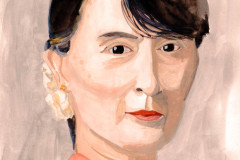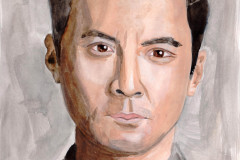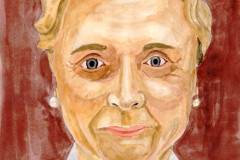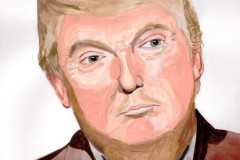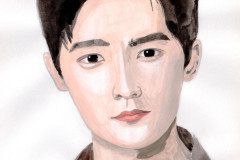Introduction
Creature art is a key part of fantasy illustrations. By creating unique and believable creatures, you make your fantasy worlds more interesting and real. This guide helps you understand and practice creature art techniques that keep your drawings engaging and creative.
Through clear steps and ideas, you will learn how to build creatures from imagination or references. This helps make your art stories stronger and gives your audience something exciting to explore. Let’s start exploring creature art for fantasy illustrations.
The Basics of Creature Anatomy
Understanding anatomy forms the foundation of believable creature art, especially when venturing into fantasy illustration. Without it, your creatures might look stiff or strangely posed. The skeleton acts like a framework—think of it as the invisible architecture beneath fur, scales, or feathers. Even if your creature is entirely imaginary, its bones should make sense to support realistic movement. Simple knowledge about where bones connect or how joints bend helps you sketch solid, convincing poses.
Different animals have distinct skeleton types, and these differences shape how they move. Mammal skeletons, for instance, have flexible spines for running or leaping, while birds have lightweight bones built for flight. Reptile skeletons can inspire sturdier, sprawling limbs or swaying tails. When you know how bones align and lock together, you can avoid awkward or impossible positions in your creatures.
Muscles add another layer of realism by hinting at motion and power. Muscle groups wrap around bones and tell a story: which parts contract or relax during an action. Drawing simple muscle shapes—not just lumps, but forms that suggest how they stretch or bulge—turns a stiff pose into one that feels alive. For example, a creature lifting a heavy paw would show tension in forearm muscles, while the torso might twist to support the movement.
For beginners, using basic sketches of skeletons and overlaying muscle shapes can reveal surprising details. Such practice can dramatically improve the way your creatures stand, run, or crouch. Ask yourself: does this pose display believable weight and balance? Watching how real animals move offers clues, but knowing the anatomy beneath helps you create something that’s both fantastic and physically plausible.
Using Real Animals as Inspiration
Observing Nature’s Designs
When you look closely at animals, you’ll notice details that can breathe life into your creature art. Skin, fur, and scales aren’t just textures—they tell stories about the animal’s environment and behavior. Think about the rough, cracked skin of a crocodile contrasted with the sleek, shiny fur of a otter. These differences come from their unique habitats and lifestyles.
Try sketching animals from life or photos to capture subtle features like muscle definition under the fur, the way scales overlap on a lizard’s tail, or the sheen of wet feathers on a heron. Focus on parts that interest you most—perhaps the way a horse’s mane flows or the patterns on a butterfly’s wings. Quick, simple studies with pen or pencil can sharpen your eye for these details. It’s less about perfect drawing and more about seeing how nature builds form and texture.
Blending Features for Fantasy
Mixing traits from different animals can create creatures that feel both familiar and new. Combining the sturdy legs of a gorilla with the sinuous body of a snake might give your creature surprising agility and strength. Or maybe you borrow the eyes of a hawk for sharp vision atop a wolf-like head.
Try thinking practically—how do these features work together? Mixing webbed feet from a frog with the wings of a bat might suggest an amphibious flyer. Play with contrasts too: rough scales paired with soft feathers can hint at adaptability or conflict within your creature’s nature. Sometimes the odd combinations spark the best ideas, even if they seem odd at first.
Remember, inspiration from animals is a starting point. Your creativity fills the gaps, turning study into something alive on the page.
Exploring Creature Textures and Colors
Textures give your creature art a sense of reality that flat shapes just can’t provide. Whether it’s rough scales, soft fur, delicate feathers, or slick skin, each surface tells a bit about the creature’s life. I’ve noticed that when you nail these textures, people start to believe in the creature’s existence, even if it’s completely made-up.
Drawing scales, for example, isn’t just about repeating shapes; you want to show their overlap, how light hits them differently, and maybe how scars or wear affect them. Fur needs careful layering—quick, short strokes in the right direction while varying pressure can create a believable fluffiness or coarseness. Feathers have this unique layered pattern and slight translucence, which calls for subtle shading and edge highlights. Skin? It can range from smooth and shiny to cracked and leathery, demanding attention to pores, wrinkles, or shine spots.
Color can shift how the creature feels. A dark, muted palette might suggest stealth or danger, while bright colors may signal warning or courtship. Sometimes a creature from a cold environment wears icy blues or whites, but what if it’s warm-blooded and uses reds or oranges to regulate temperature? Thinking about color’s meaning helps you decide — or even challenge — expectations.
When picking palettes, try to limit yourself to a few dominant hues plus accents to prevent visual chaos. Look at nature: desert animals often have tans and browns with pops of rusty red, while rainforest creatures flaunt greens and yellows in dense patterns. Using complementary or analogous colors subtly directs the viewer’s eye and enriches mood.
Finally, details matter. Tiny pattern variations—spots, stripes, mottling—can hint at camouflage or social signals. It might seem like a small decision, but these texture and color choices pull the audience deeper into your fantasy world. Do you want your creature to blend in or stand out? What feeling do you want the colors to evoke? Those questions shape your approach more than any rule book.
Designing Creature Poses and Expressions
Poses and expressions give life to your creature beyond its physical form. They tell stories. They hint at moods. When you design a pose, think about what the creature is doing and why. A crouching stance might suggest alertness or sneaky behavior. A broad, open posture could signal dominance or confidence.
Try to balance movement and stillness. If you want to capture a creature mid-leap, exaggerate limb positions to show energy and tension. But sometimes stillness can be even more powerful—like a creature watching quietly, its pose tense but controlled. Notice how the body leans, twists, or relaxes to express different states of mind and intent.
Facial expressions have a big role in this, too. The eyes, for example, reveal curiosity, aggression, or fear. Squinted eyes might show suspicion, while wide-open eyes often convey surprise or alarm. Mouth shapes add another layer—bared teeth for anger, a relaxed jaw for calm. Don’t overlook how subtle shifts in posture around the head and neck also communicate a creature’s feeling or intention.
Consider a fox-like fantasy creature sneaking through shadows. Its low, crouched body, ears tilted forward, and narrow eyes create tension. Or an imposing guardian beast, standing tall with a raised head, exposing its fangs but holding a calm gaze. In both cases, pose and expression hint at behavior and role—predator, protector, something else?
Sometimes you might find that a certain pose looks good but feels off because it doesn’t fit the creature’s nature. If your creature is shy, a bold, open stance might confuse the viewer. So ask: what does this pose say about the creature’s personality? Is it consistent with its role in the story?
When you study creatures from nature or watch animals in documentaries, note their typical poses related to behavior. Apply those observations to your designs, tweaking for fantasy but preserving the connection between pose, mood, and story.
Creating Creature Backgrounds and Settings
When crafting environments around your creature, think beyond just a pretty backdrop. The setting should tell part of its story—where it lives, how it moves, even what it fears. You want the background to enhance the creature’s presence, not just sit behind it. For example, a swampy, foggy marsh will create a very different mood than a dry, rocky mountain pass. The choice reveals as much about the creature’s nature as its pose or expression.
Lighting plays a huge role here. Dim, filtered light can make a creature feel mysterious or threatening, while bright, open spaces might suggest boldness or vulnerability. Atmosphere adds layers—dust, mist, or drifting leaves can deepen mood and give sense of motion. Think about how light interacts with the creature’s surface and surroundings. Shadows, reflections, and even fog can blur boundaries, sometimes making the creature seem more at home or haunting.
Getting your creature to feel natural in its environment takes some care. Look out for details like how it touches the ground—does its weight press into mud, scatter leaves, or rustle tall grass? Shadows should connect to the creature convincingly; off shadows can break immersion instantly. Don’t forget perspective—if the creature suddenly looks out of scale or oddly placed, the whole piece suffers. Sometimes shifting the viewpoint or tweaking size relations helps a lot. In my own work, I often spend nearly as much time placing and adjusting the creature in its space as designing the creature itself.
Have you ever noticed a creature that looks like it’s floating or pasted on top of the background? Avoid that by committing to physical interaction between the creature and its world. The most compelling art feels lived-in. Ask yourself: Does this setting support who my creature is? Or does it just happen to be there?
Using Digital Tools for Creature Art
When working on creature art, digital tools can really change how you build and refine your designs. You might find yourself juggling layers, brushes, and textures to get that subtle touch, though sometimes it feels a bit overwhelming at first. But once you get the hang of it, these tools let you add a lot of depth and detail that traditional methods might struggle with.
Popular software for creature art usually includes:
- Photoshop: Most artists start here. It offers versatile brushes, layer control, and powerful blending modes, making it quite beginner-friendly with endless customization.
- Procreate: Many appreciate its simplicity on the iPad. It’s intuitive and feels more like painting, which helps when focusing on creative flow instead of settings.
- Krita: A free alternative that’s often overlooked. It packs a surprising amount of professional features without a steep learning curve.
When detailing, layers are your best friend. You can separate line work, base colors, shadows, and highlights so you’re not stuck redoing everything if one part isn’t right. Experiment with different brushes, maybe one for rough scales and another for soft skin, and blend carefully between them to avoid harsh edges.
Textures added through overlays or custom brushes help sell realism. You might even import photos or scans as texture sources, tweaking their opacity to match your creature’s surface. The beauty is you can test endlessly without ruining the original work, which might let you push details further than you thought possible.
Building Creature Stories Through Art
When you create a creature, you’re not just designing a form—you’re hinting at a story, a life lived beyond the frame. The way a creature stands or moves can suggest confidence, fear, or weariness. A slouched posture might imply defeat or fatigue, while a proud stance could show dominance or curiosity. Have you ever noticed how just a slight tilt of the head changes everything?
Scars, markings, and color choices do more than add detail. They whisper of battles fought, environments survived, or alliances formed. For example, a jagged scar across an eye might suggest a past encounter that changed the creature, or faded colors could imply age or camouflage. Even props like broken weapons, tattered fabrics, or peculiar trinkets tell stories—you might imagine where they came from or what they mean to the creature.
To make a creature truly memorable, add those small, unusual features that feel a little off, yet natural. Maybe one claw is longer, or the creature carries a nest of shiny stones. Quirks like these give life and personality beyond anatomy. They invite viewers to wonder: what’s the story behind that odd trait? These details linger in the mind, making the creature more than just a visual—it becomes a character in its own right.
Practicing Regularly to Improve Creature Art
Practice isn’t just a step in creature art—it’s sort of the lifeblood of improvement. You might think that occasionally sketching creatures when inspiration strikes is enough, but developing a steady habit makes a surprising difference. When you commit to daily or weekly sessions, you’re not just sharpening skills; you’re slowly rewiring how you see and interpret creatures.
Try quick sketches focusing on specific challenges like anatomy—draw the same limb in various poses. Or spend a few minutes on texture studies: scales, fur, feathers. These short bursts are low-pressure and they build something deeper than just lines on paper, they build confidence. Maybe keep a small sketchbook just for these snapshots of practice.
On a bigger scale, working on projects helps you stretch your abilities further. What about designing a whole creature series exploring evolutionary traits? Or telling a story through a short comic featuring those creatures? That pushes you beyond single images and forces you to think about consistency, behavior, and personality in art.
It’s tempting to jump straight into elaborate pieces, but patience and repetition are quietly powerful. So maybe, what’s a small daily step you could take? A pose study today, a texture experiment tomorrow, a creature sketch later this week—these create layers of skill over time.
Conclusions
Practice with the ideas in this article to grow your creature art skills. Understanding creature basics and using different styles will help you create creatures that feel alive and fit your fantasy world. Each step builds your ability to bring your imagination onto the page.
Keep trying different poses, textures, and backgrounds to make your creatures stand out. Your art will become more confident and eye-catching as you explore and apply these creature art techniques. Keep drawing and enjoy making your fantasy art come to life.



















